Venice, at the Museum of Oriental Art the ancient Chinese ceramics from the kilns of Yaozhou
From September 7 to October 23, 2022, MAOV - Museum of Oriental Art in Venice is hosting the exhibition Vivid Transparencies. Ceramics of Yaozhou from the Shang Shan Tang Collection, an international exhibition dedicated to the manufactures of the ancient kilns of Yaozhou, located in northern China.
Active from the 8th to the 13th century, these kilns are most famous for their 11th- and 12th-century production, which is characterized by the presence of vivid carved or impressed decorative motifs under a transparent olive-green glaze that goes by the generic name of celadon in the West and qingcigreen-blue pottery in Chinese (stoneware with green-blue glaze). The historical parabola of the Yaozhou manufactures, is astonishing from whatever perspective one looks at it: technological, archaeological, and textual. From being a peripheral factory with modest production in the early phase, before the mid-10th century its celadons were already included in the imperial tribute system, and in the 11th century it became the empire’s most influential center for qingci reminiscent of jade, China’s iconic material, which in 1084 even earned it government permission to erect the first stele dedicated to the ceramic deity.
The 96 works on display all come from a foreign private collection, the Shang Shan Tang, literally “Hall of the Highest Good,” which includes one of the most comprehensive collections of Yaozhou ceramics in the world, illustrating the development of the manufactory with specimens of excellent quality. All the pieces will be displayed in Room 12 of the Museum of Oriental Art, which in 1928 was designated to house Chinese porcelain from what was once the collection of Henry of Bourbon. The historic setting designed by Nino Barbantini has been preserved since then and harmonizes the extraordinary Asian pieces with the characters of a Rococo apartment, adorned with eighteenth-century mirrors and stuccoes, creating a fascinating environment.
This project renews the collaboration between Ca’ Foscari University Venice, with its Department of Asian and Mediterranean African Studies, and Museo d’Arte Orientale of the Veneto Regional Directorate of Museums for the realization of events with a high scientific and at the same time popular profile, in a synergy of intent useful and necessary for the dissemination of knowledge of non-European cultures.
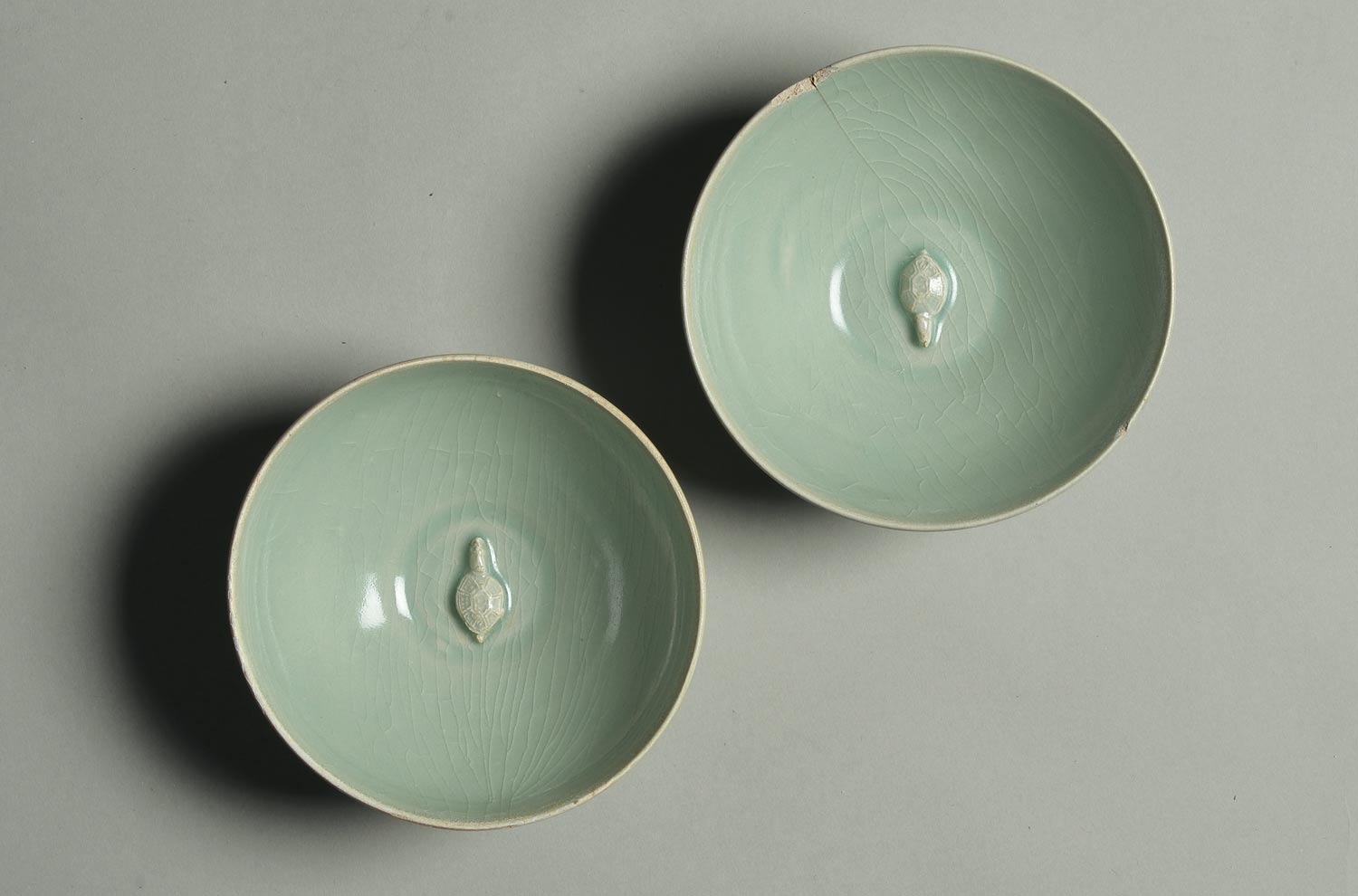
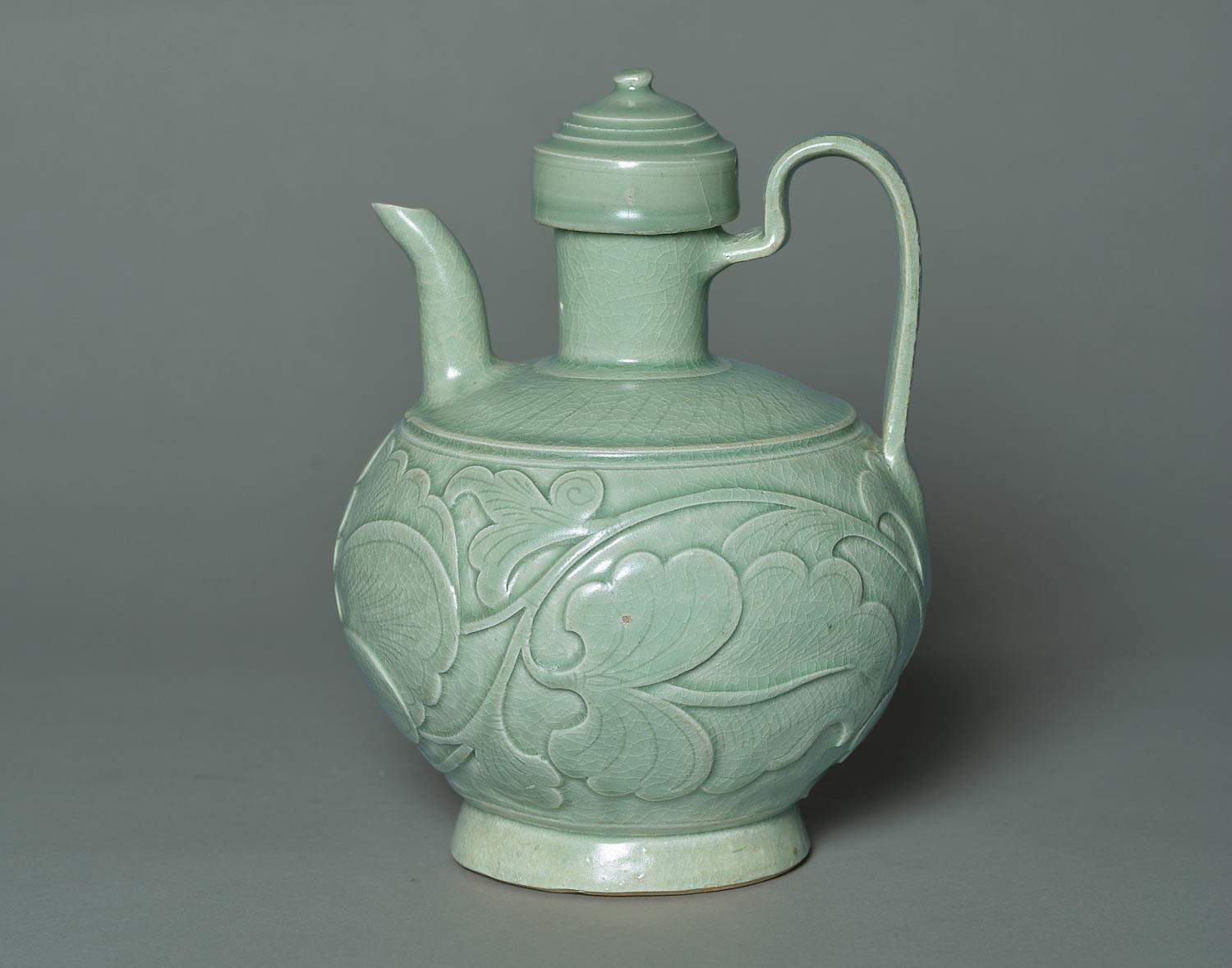
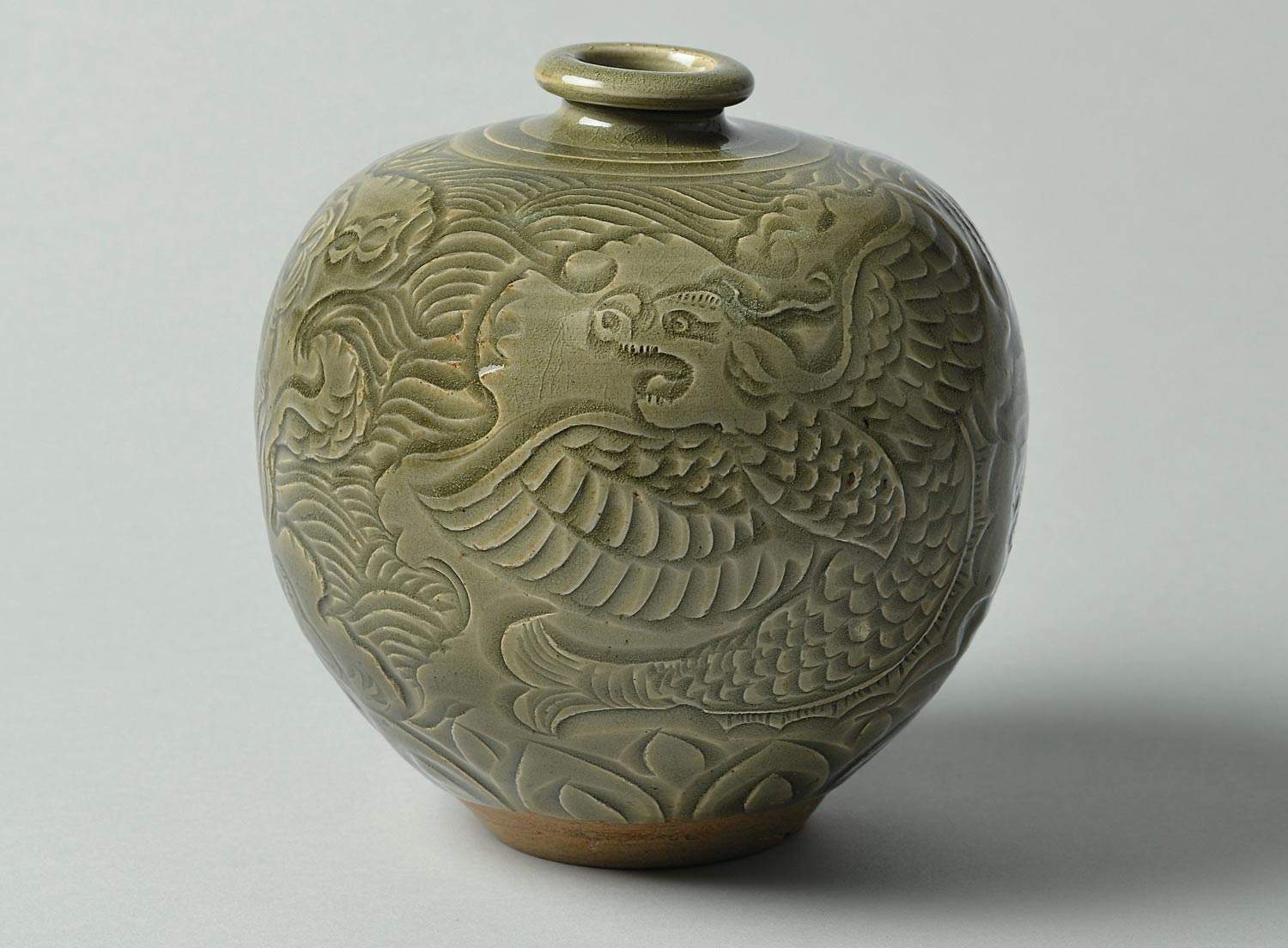
Yaozhou kiln
From being a modest factory, by the 10th century the Yaozhou kiln had already specialized in the production of high-quality celadon (until then the preserve of southern manufactures) through a series of technological achievements dictated by the need to resolve defects and drawbacks. Known later mainly for the manufacture of celadon with an olive-green hue with decorative motifs engraved or embossed under the glaze, it had been implanted to produce black-covered pottery for daily domestic use and the sancai (“three-color”) polychrome glaze genre intended mostly for grave goods.
Northern China was known for porcelain production, and artisans in Yaozhou also tried their hand at making white pottery (false porcelain), made by covering the impurities in the body clays with a layer of white engobe before applying the colorless transparent glaze. The results, however, were disappointing: rather than white, the glaze turned out an unattractive yellow, which prompted the stokers to venture into the complex, and to them unfamiliar, system of firing in a reducing (oxygen-free) atmosphere. Chemical analysis showed that the recipe for body and glaze remained unchanged, but thanks to the reducing firing, the blanket turned out a more than satisfactory green when the titanium in the engobe did not interfere, yellowing it. To overcome this problem, potters began to completely cover the objects first with white engobe and then with glaze. This method presented another challenge, however: during firing, the glaze becomes a very powerful glue, thus making it necessary to limit as much as possible the points of contact of the foot of each object with the bottom of the container in which it was placed for firing. Again, the Yaozhou potters showed great ingenuity by gradually refining the technique until they devised one that left only three small scars on the base. This practice is commonly associated with the celebrated Ru pottery (produced from the late 11th century for a hundred years) and considered a great achievement of Ru potters, but in fact it was Yaozhou colleagues who invented it a hundred and fifty years earlier. A new challenge arose in the 11th century, when the stokers adopted coal (as a replacement for wood, which was in short supply) as a fuel to power the kilns. The different yield of coal compared to wood imposed significant changes to the kiln layout, while the rapid cooling at the end of the firing cycle ensured transparent glazes (as opposed to earlier glazes that were translucent). Transparency was important so that the decorative motifs executed on the underlying body could be clearly readable: the new aesthetic taste, in fact, favored intensely ornate objects, but, under a translucent blanket, the decorations appeared hazy; therefore, Yaozhou stokers took advantage of the full maturity achieved by glazing fired in coal-fired kilns by rapidly cooling it. As for the olive-green hue that distinguishes the blankets of this period, recent chemical analyses have indicated a change in the recipe, probably due to the composition of local raw materials, characterized by an increase in the percentage of titanium, responsible for this hue.
Opaline glazing came back into vogue in the late 11th and early 12th centuries with Ru ceramics, which were highly prized by Emperor Song Huizong, who wanted them used at court. Once again the potters of Yaozhou knew how to respond promptly to the new fashion, creating the so-called “moonlight” glaze, which looks similar to jade, translucent, shiny, soft, and characterized by a very muted shade of green (as opposed to the light blue typical of Ru specimens). In the 13th century the Yaozhou manufactories fell into disuse only to be rediscovered through a series of archaeological campaigns especially in the 1990s that demonstrated their crucial role in the development of Chinese ceramic history.
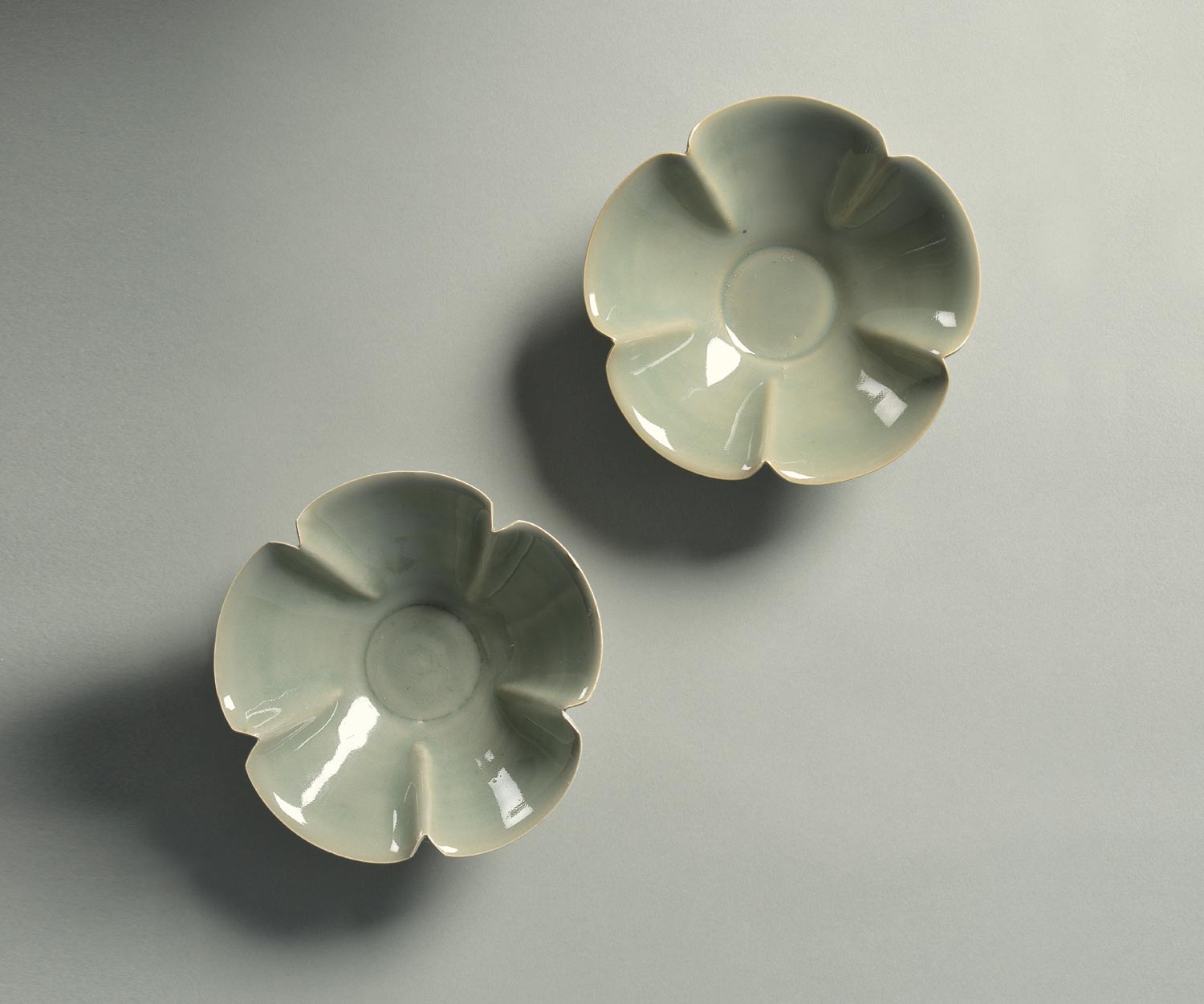
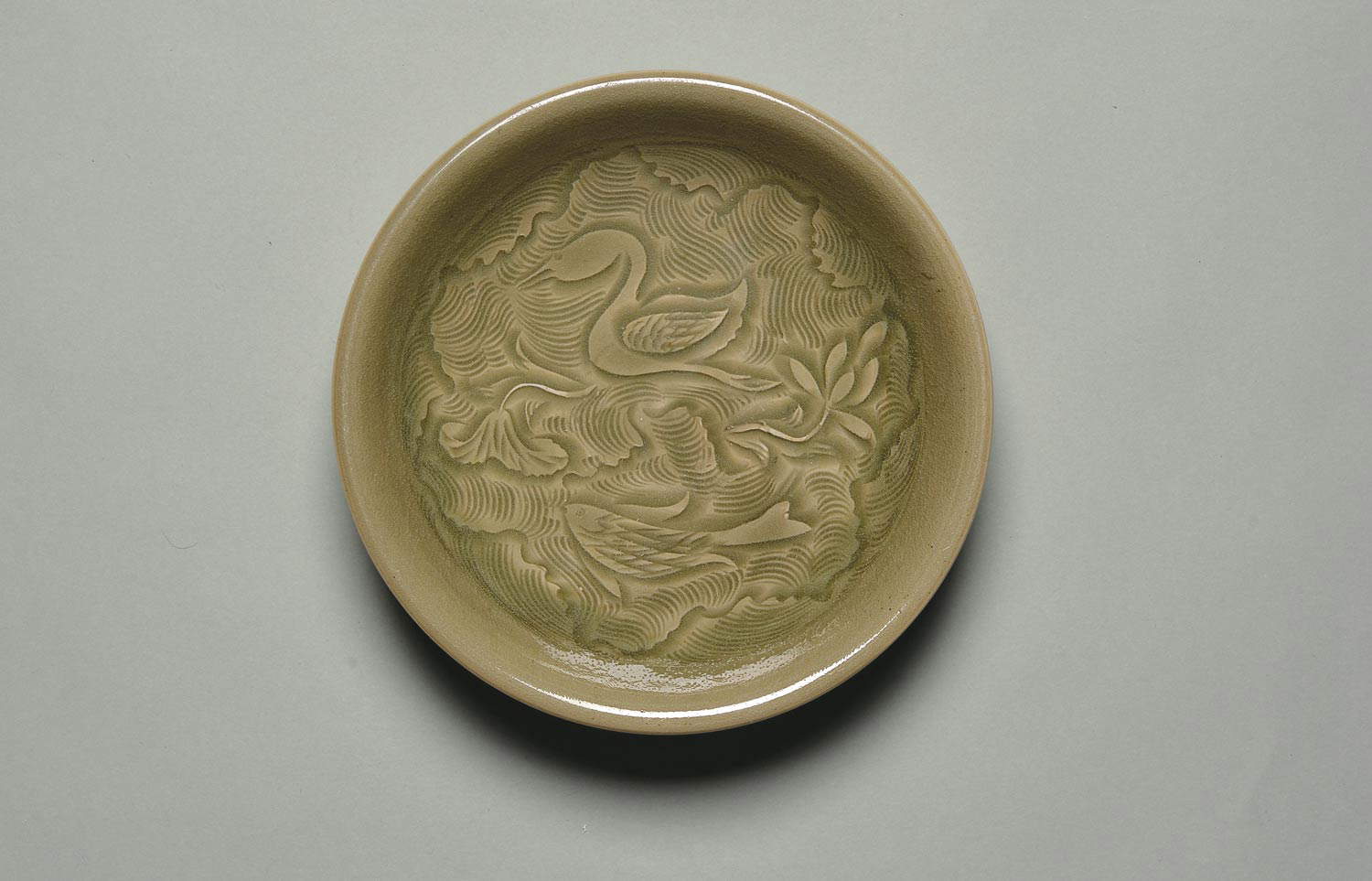
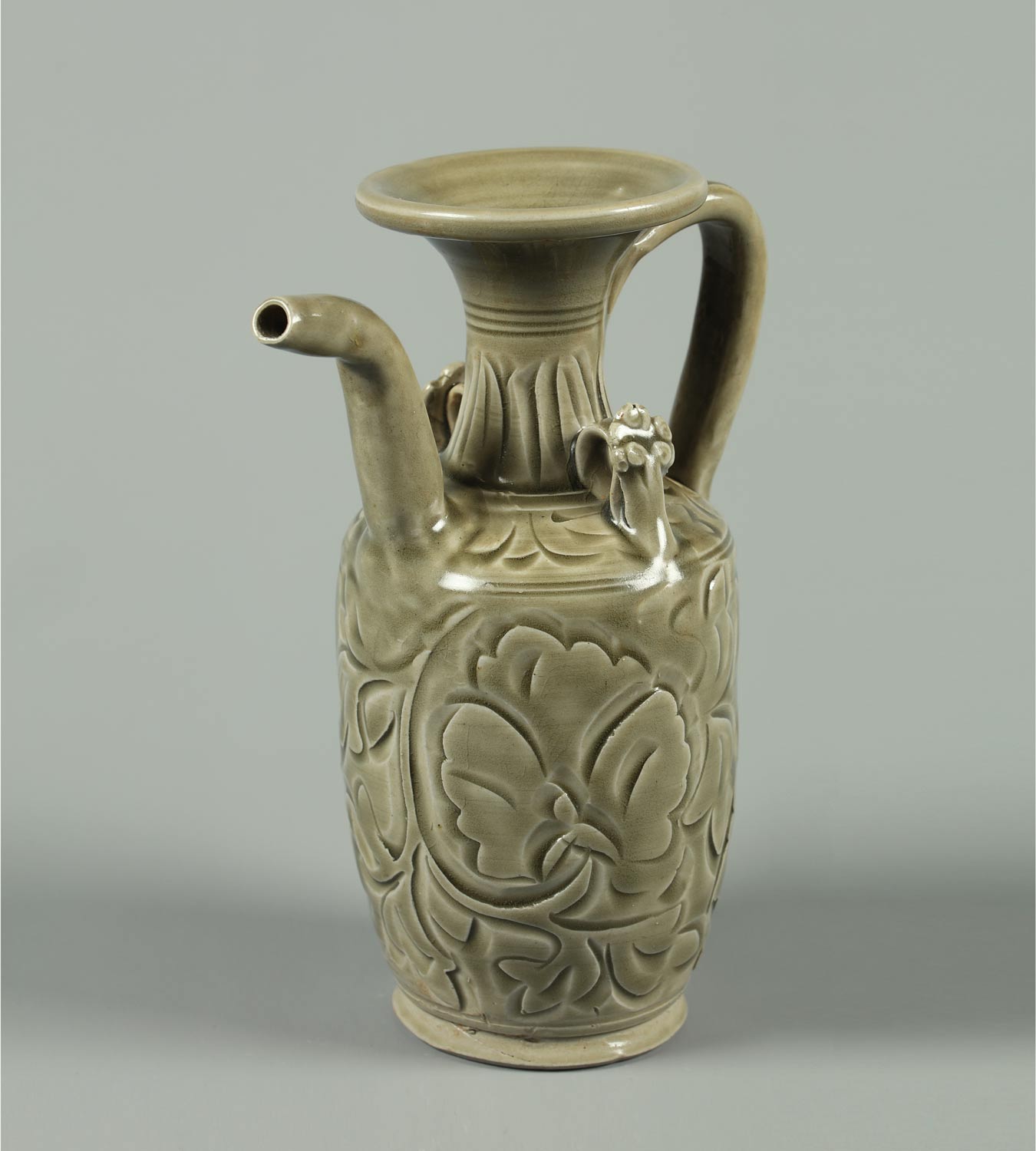
The sections of the exhibition
The exhibition is organized by themes, starting with the technological one so as to capture the sophistication of the experiments conducted over time by the Yaozhou potters, who were always ready to meet the challenges posed by the inherent characteristics of local raw materials, to constantly innovate production and to adapt to the fashions of the moment.
Some display cases are centered around the carved, engraved, or embossed decorative motifs that distinguish Yaozhou celadons: peonies (a metaphor for female sensuality), chrysanthemums (a symbol of autumn and the wisdom one acquires over the years), lotuses (introduced with Buddhism), children at play (a wish for numerous offspring and unbroken lineage), mandarin ducks in a pond (an emblem of faithfulness conjugal fidelity), mini sculptures depicting turtles applied to the bottom of small cups to give the impression that they are swimming in the liquor being poured into them, mythological animals evoking extraordinary stories. Other showcases, however, focus on the function of the forms used in domestic, as well as religious (especially Buddhist) settings. One display case is devoted to specimens marked with inscriptions, one of which is of particular importance because it indicates that by the time of the Five Dynasties (907-960), Yaozhou kilns had already achieved excellence in celadon manufacture, so much so that they were included in the tribute system for the imperial court. While the Yaozhou manufactures are famous for their olive-green-colored ceramics, it is important to note that they also excelled in the production of the rust-red and black genres, the latter monochrome or mottled with red to a very modern effect, and in fact a showcase accommodates the various types by highlighting their colors.
The exhibition is open Tuesday through Sunday from 10 a.m. to 6 p.m., and the visit is included in the entrance fee to MAOV - Museum of Oriental Art in Venice.
 |
| Venice, at the Museum of Oriental Art the ancient Chinese ceramics from the kilns of Yaozhou |
Warning: the translation into English of the original Italian article was created using automatic tools. We undertake to review all articles, but we do not guarantee the total absence of inaccuracies in the translation due to the program. You can find the original by clicking on the ITA button. If you find any mistake,please contact us.




























